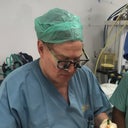Answers (12)
From board-certified doctors and trusted medical professionals
Dr. John Paul Tutela, MD

Dr. John Paul Tutela, MD
Board Certified Plastic Surgeon
Answer
Dr. Martin Jugenburg, MD

Dr. Martin Jugenburg, MD
Certified Plastic Surgeon
Answer
Dr. David Tauber, MD

Dr. David Tauber, MD
Board Certified Plastic Surgeon
Answer
Dr. William Townley, MD, FRCS(Plast)

Dr. William Townley, MD, FRCS(Plast)
Specialist Registered Plastic Surgeon
Answer
Dr. Richard G. Reish, MD, FACS

Dr. Richard G. Reish, MD, FACS
Board Certified Plastic Surgeon
Answer
Dr. Larry Weinstein, MD

Dr. Larry Weinstein, MD
Board Certified Plastic Surgeon
Answer
Dr. Reza Momeni, MD, FACS
Dr. Reza Momeni, MD, FACS
Board Certified Plastic Surgeon
Answer
Dr. Steven Wallach, MD
Dr. Steven Wallach, MD
Board Certified Plastic Surgeon
Answer
Dr. William B. Rosenblatt, MD
Dr. William B. Rosenblatt, MD
Board Certified Plastic Surgeon
Answer
More Breast Augmentation Questions
See all Breast Augmentation Q&AWE SEND PRETTY
EMAILS
What’s trending? Who’s turning heads? Which TikTok myths need busting? We’ve got you. No fluff, no gatekeeping—just real talk. Get our free, unfiltered newsletter.